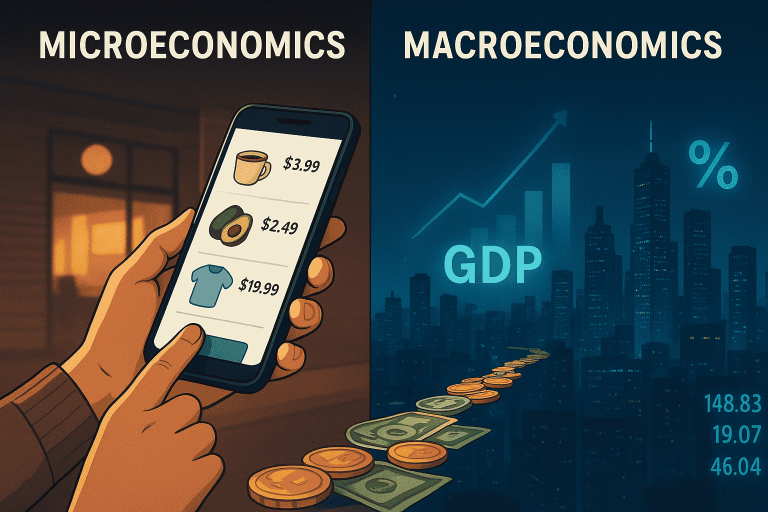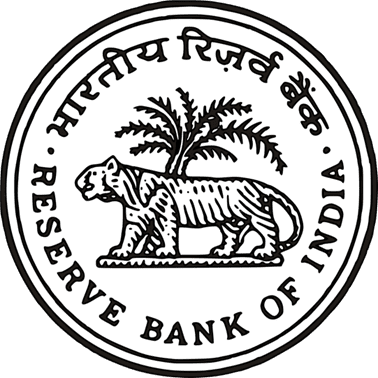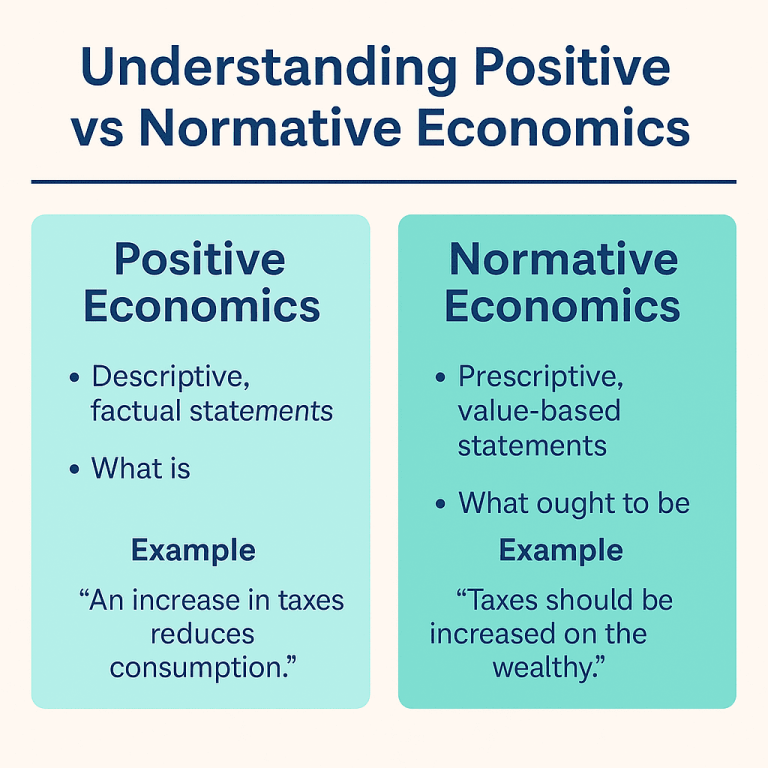Struggling to grasp the difference between microeconomics and macroeconomics? You’re not alone. While both are fundamental branches of economics, they analyze the world from profoundly different perspectives. Microeconomics zooms in on the individual actors and specific markets—like why the price of coffee rises or how a local business sets its wages. In contrast, macroeconomics zooms out to examine the entire economy, focusing on aggregate phenomena like national GDP, inflation, and unemployment rates. This clear breakdown will cut through the confusion, using simple examples to show you how these two lenses work together to explain everything from your personal spending choices to global economic trends.
What is Economics? (A Quick Refresher)
Economics is the social science that studies how individuals, businesses, governments, and societies make choices to allocate scarce resources to satisfy their unlimited wants. It is broadly divided into two main branches: Microeconomics and Macroeconomics.
Think of it like this:
Microeconomics is like looking at the economy through a microscope. You zoom in to study the individual cells.
Macroeconomics is like looking at the economy from a satellite. You zoom out to see the entire planet.
Planning to pursue an M.A. in Economics from top-tier Universities? Grasp the detailed CUET PG Economics Syllabus, IIT JAM Economics Syllabus or ISI MSQE Exam Syllabus and begin dedicated preparation for these exams.
Microeconomics: The Study of Individual Units
Microeconomics focuses on the actions of individual agents and the functioning of specific markets. It’s the study of economic decision-making at a small, or “micro,” level.
Key Agents:
Households: Decisions about what to buy, how much to save, and whether to work.
Firms (Businesses): Decisions about what to produce, how to produce it, and what price to charge.
Industries: The study of specific markets, like the market for smartphones, coffee, or automobiles.
Core Concepts and Questions:
Supply and Demand: How are prices determined in a specific market?
Production Costs: How do businesses decide the quantity to produce?
Market Structures: How does competition (e.g., perfect competition, monopoly) affect outcomes?
Factor Pricing: How are wages for labor and prices for other resources determined?
Welfare Economics: Is the market outcome efficient? Should the government intervene?
Examples of Microeconomic Issues:
Why did the price of avocados rise this year?
How would a new minimum wage law affect a local restaurant’s hiring?
How does a merger between two large tech companies (like Microsoft and Activision) affect consumer choice and software prices?
Why do electric car manufacturers receive government subsidies?
Macroeconomics: The Study of the Economy as a Whole
Macroeconomics examines the economy in its entirety. It looks at aggregate indicators and the big picture.
Key Aggregates:
National Output: The total value of goods and services produced in a country (GDP).
Overall Price Level: Inflation and deflation across the entire economy.
Total Employment/Unemployment: The health of the job market for the whole nation.
General Interest Rates: The cost of borrowing money in the economy.
Core Concepts and Questions:
Economic Growth: How can a country increase its GDP and standard of living over the long term?
Business Cycles: What causes economic booms and recessions?
Inflation: What causes the general price level to rise?
Unemployment: Why is there unemployment even in a healthy economy?
Fiscal and Monetary Policy: How can the government (spending/taxes) and the central bank (interest rates/money supply) manage the economy?
Examples of Macroeconomic Issues:
Why is the U.S. economy in a recession?
What is causing the current high rate of inflation in Europe?
How will a federal interest rate cut affect national unemployment?
What is the impact of a multi-trillion dollar government stimulus package on national debt and economic growth?
The concepts of macroeconomics, such as GDP, inflation, and monetary policy, are the daily tools of economic governance. Aspiring policymakers can delve deeper into this field by exploring the Indian Economic Service (IES) Syllabus, which details the advanced knowledge required for a career in government economic analysis.
Microeconomics Vs. Macroeconomics: The Difference Between Micro and Macro
This table summarizes the key distinctions:
| Feature | Microeconomics | Macroeconomics |
|---|---|---|
| Meaning | The study of individual economic units. | The study of the economy as a whole. |
| ‘Micro’ vs. ‘Macro’ | Micro (small) → Trees | Macro (large) → Forest |
| Primary Focus | Individual markets, prices, and agents. | Aggregate economy, national income, general price level. |
| Central Problem | Determining the price and output of individual commodities and factors of production. | Determining the level of income, employment, and overall price stability in the economy. |
| Key Tools | Demand and Supply in a specific market. | Aggregate Demand (AD) and Aggregate Supply (AS) of the whole economy. |
| Objective | To analyze how to achieve the most efficient allocation of resources within a market. | To analyze how to achieve full employment, price stability, and economic growth for the entire society. |
| Example Variable | The price of a single car from Toyota. | The overall inflation rate for all goods and services. |
| Example Question | “Why are rents in downtown Austin increasing?” | “Why is the national unemployment rate decreasing?” |
The Important Connection
While they are distinct fields, microeconomics and macroeconomics are deeply interconnected. Macroeconomic outcomes are the sum of countless microeconomic actions.
Microfoundations of Macro: A macroeconomic phenomenon like a recession (a macro event) is ultimately the result of many individual firms laying off workers and many households spending less (micro decisions).
Macro Effects on Micro: A macroeconomic policy like raising interest rates (a macro action) makes it more expensive for an individual family to get a mortgage or for a small business to loan money for expansion (a micro outcome).
In essence, you cannot fully understand the whole (macro) without understanding the behavior of its parts (micro), and vice versa.
Understanding these economic principles is not just academic; it’s the foundation for real-world policy making. For those inspired to apply this knowledge at the highest level, a career with the Indian Economic Service (IES) represents a premier path to shaping India’s economic future. Begin Indian Economic Service (IES) Preparation by analysing the Indian Economic Service Previous Year Questions (IES PYQs).



